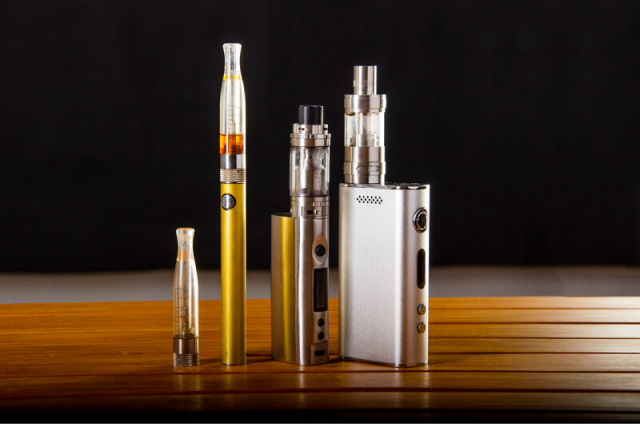E-Cigarettes & Vaping
E-cigarettes are electronic devices that heat nicotine, flavorings, and other chemicals to create an aerosol that is inhaled. Using an e-cigarette is sometimes called “vaping.” Vaping is not safe for anyone, especially kids, teens, or young adults.
The large volume of nicotine in e-cigarettes makes them highly addictive and harmful to brain development—while increasing the risk that young people will smoke cigarettes in the future. Plus, the vapor can contain cancer-causing toxins and tiny particles that harm the body.

Youth vaping is an epidemic
Knowing the risks, signs, and treatment of e-cigarette use can help you stop or prevent the youth in your life from vaping.
- In 2022, about 1 in 10, or more than 2.5 million U.S. middle and high school students used e-cigarettes within a 30-day period.
- According to the FDA, more than a quarter (27.6%) of current youth e-cigarette users use an e-cigarette product every day.
- Overwhelmingly, current users (nearly 85%) used flavored e-cigarettes, with fruit flavors being the most popular, followed by candy, desserts, or other sweets.
- Flavors in e-cigarettes are one of the top three reasons young people prefer them. The flavoring predisposes kids to become tobacco users more than those first exposed to non-flavored tobacco flavor.
Facts & Risk Factors
Using nicotine under the age of 26 can harm the parts of the brain that control attention, learning, mood, and impulse control. Adolescent nicotine use may increase future drug addiction risks. 99% of e-cigarettes contain the addictive drug nicotine, even when labels say otherwise. The Centers for Disease Control and Prevention recommends:
- Do not use e-cigarettes that contain THC or vitamin E acetate.
- Do not get a vaping device from friends, family, or online dealers.
- Do not modify or add any substances to e-cigarettes not included by the manufacturer.
How e-cigarettes work
- E-cigarettes heat a liquid that usually contains nicotine, flavorings, and other chemicals that help to produce an aerosol.
- People inhale e-cigarette aerosol into their lungs. When the person exhales, those nearby can also breathe in secondhand aerosol.
- In addition to tobacco, e-cigarette devices can be used to deliver marijuana and other drugs. Marijuana vaping by school-aged youth doubled between 2013 and 2020. Learn more about marijuana use disorder.
How to recognize e-cigarettes
- E-cigarettes come in many shapes and sizes. Most have a battery, a heating element, and a place to hold a liquid.
- Some e-cigarettes look like cigarettes, cigars, or pipes.
- Others look like USB flash drives or pens, which makes them harder to detect.
- Larger devices (called tanks and mods) are designed to create more vapor.
Signs & symptoms
The use of e-cigarettes and vapes has risen in recent years, especially among youth. E-cigarettes are associated with a number of health risks caused by the dangerous chemicals they contain. E-cigarettes can contain nicotine, a highly addictive drug. Learn how to recognize the signs and symptoms of e-cigarette and vaping use to help protect you and the people you care about.
Signs & symptoms of youth and young adult vaping
- Finding unusual or unfamiliar items—such as the vaping device made by JUUL (an electronic cigarette company) that looks like a USB drive
- Sweet fragrances
- Mood swings, agitation
- Acting impulsively
- Declining academic or athletic performance
- Shortness of breath
- Weight loss
- Nausea or vomiting
- Mouth sores
- Coughing and throat-clearing
- Chest pain
- Seizures
These tips and resources can help you prevent or stop your child from using e-cigarettes
Don’t use tobacco in your home. You’ll set a good example and ensure your child is not exposed to secondhand smoke or vapors.
Smoke-free tip! smokefree.gov and 1-800-QUIT-NOW are free resources for help quitting tobacco.
Seek medical support. Meet with your child’s healthcare provider to hear about the health risks of e-cigarettes and other tobacco products.
Talk to your child or teen about the risks of e-cigarettes. These tips can help.
Empower your teen to be smoke/nicotine-free. Connect them with this resource for quitting tobacco/nicotine products.